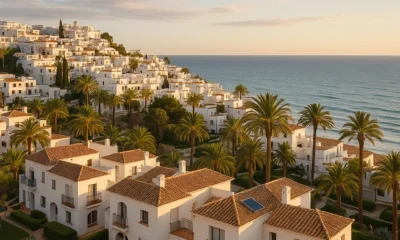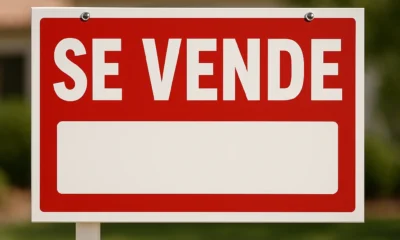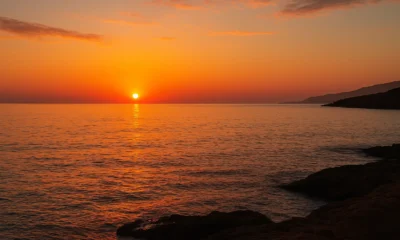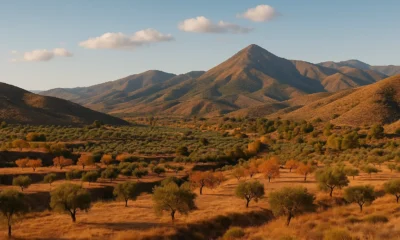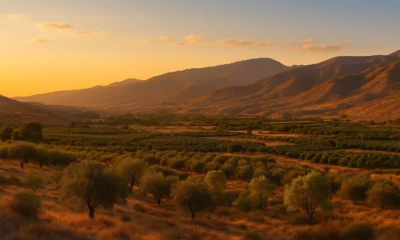Almería History and Culture: Between Sea and Sierra
Almería: A Complete Historical, Cultural and Environmental Profile of One of Europe’s Most Diverse Provinces
Explore Almería’s rich past — from coastal watchtowers to mountain villages, where history, climate and culture meet between sea and land.
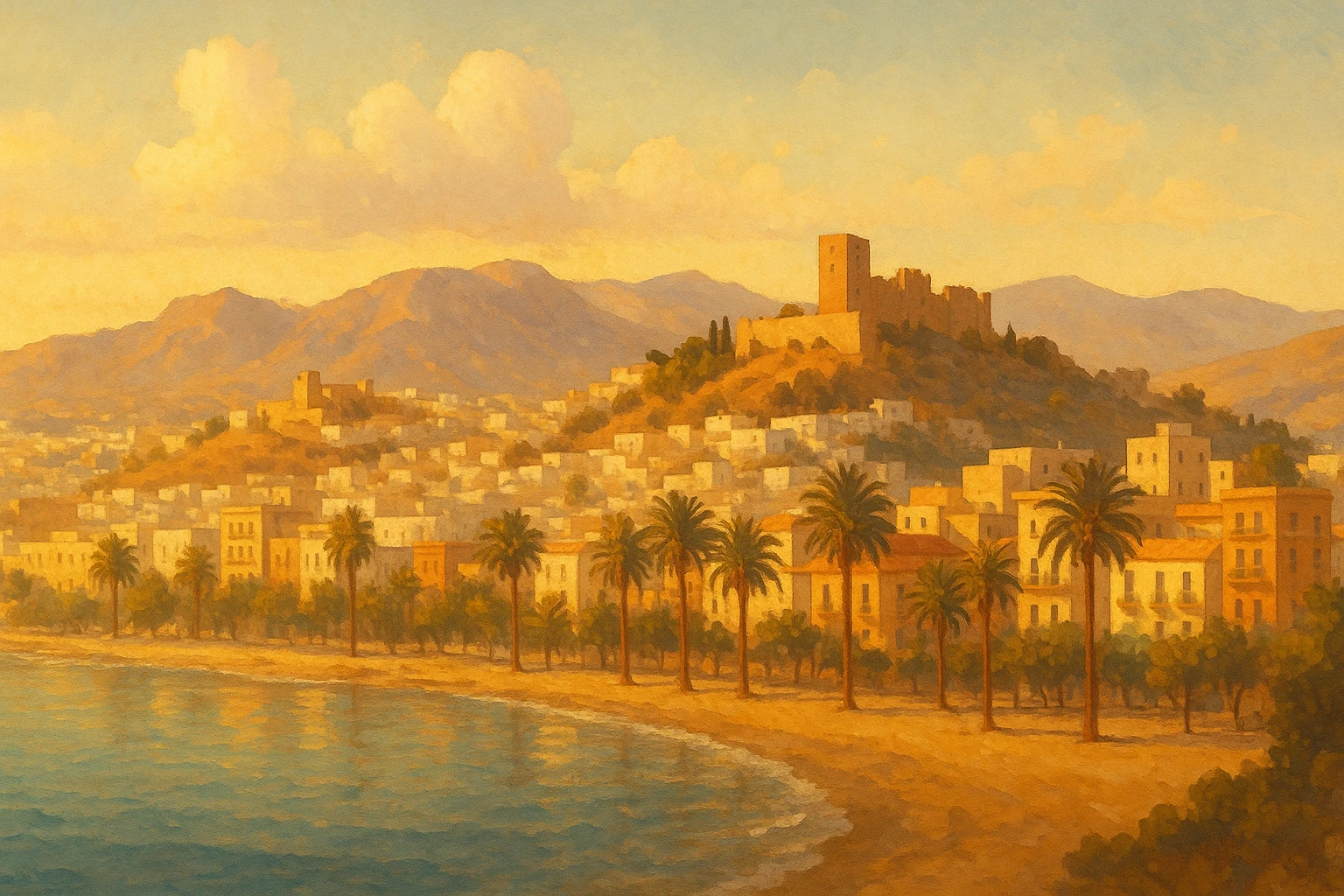
Table of Contents
- Introduction
- 1. Prehistoric Foundations: El Argar and Los Millares
- 2. Almería History in the Roman and Vandal Eras
- 3. Al-Andalus: Islamic Golden Age in Almería
- 4. Conflict and Conversion: The Aben Humeya Revolt
- 5. A Mosaic of Climates and Regional Landscapes
- 6. Almería History Through Its Economy
- 7. Culinary Traditions, Agriculture and Sustainability
- A Living Archive of European History
Introduction
Almería history spans over five millennia, revealing a unique blend of ancient civilizations, shifting empires and diverse landscapes.
Spanning from the arid coastal deserts to forested alpine ridges, the province of Almería is perhaps the most ecologically and historically multifaceted region in all of Spain. Across its territory, one can encounter remnants of early human innovation, scars of imperial conflict, delicate traces of Islamic poetry and architecture, and fields of greenhouse agriculture that now feed half of Europe. Each region—from the badlands of Tabernas to the verdant hillscapes of the Sierra de María-Los Vélez—tells a different story. This synthesis offers not only a historical overview but a regional and environmental portrait of a province where geological time and cultural epochs meet in visible, tangible ways.
The province of Almería, located in southeastern Spain, stands as a remarkable blend of prehistory, Islamic legacy, Roman infrastructure, dramatic landscapes, and modern agritech. From the oldest metal-using societies in Western Europe to a futuristic sea of greenhouses, Almería has continually reinvented itself across more than five millennia.
This profile integrates archaeological studies, climatological analysis, genetic research, and cultural heritage to provide an extended and detailed examination of Almería’s unique character.
1. Prehistoric Foundations: El Argar and Los Millares
Los Millares (c. 3200–2300 BCE): Located near Santa Fe de Mondújar, Los Millares is one of Europe’s most important Copper Age sites. The settlement included three concentric defensive walls, bastions, and over 80 tombs. It displays early evidence of metallurgy, social differentiation, and collective burial rites. Trade with other Mediterranean regions is evidenced by exotic materials like ivory and ostrich eggshells.
The Culture of El Argar (c. 2200–1550 BCE): Emerging after Los Millares, El Argar marked a leap in political centralization. Settlements like El Argar (Antas), La Bastida (Totana), and La Almoloya (Pliego) show evidence of territorial control, surplus production, and urban planning. Homes were built on terraced platforms; elites were buried with swords, jewelry, and elaborate diadems.
- El Argar (Antas): Over 1,000 tombs unearthed; signs of centralized rule.
- La Bastida: Massive fortifications; possible early form of statehood.
- La Almoloya: Discovered a silver diadem worn by a high-status woman—indicating possible matrilineal power.
- Fuente Álamo (Cuevas del Almanzora): Reveals uninterrupted settlement from the Chalcolithic into the Argaric Bronze Age.
- Cabezo Redondo (Alicante): A satellite power center known for the Villena Treasure.
Genetic studies suggest a Bell Beaker admixture from Central Europe; Argaric individuals had predominantly brown hair and light skin, with high degrees of mobility among elites.
2. Almería History in the Roman and Vandal Eras
Roman Almería: Portus Magnus: The area’s importance during the Roman Empire lay in its harbor, Portus Magnus. Salt-panning facilities and garum (fish sauce) production were central to the economy. Roads and aqueducts connected the region with the rest of Hispania Baetica.
The Vandal Passage (409–429 CE): The Vandals crossed the Pyrenees in 409 CE and established themselves briefly in Baetica. Though their rule was short-lived, some historians propose that the term “Al-Andalus” stems from “Vandalusia.” After 20 years, the Vandals departed for North Africa, founding the Kingdom of Carthage.
3. Al-Andalus: Islamic Golden Age in Almería
Founded as Al-Marīyah in 955 CE by Abd al-Rahman III, Almería became a beacon of prosperity and scholarship under the Caliphate of Córdoba. The name has inspired scholarly debate: some interpret it as ‘Mirror of the Sea’—a poetic description tied to Almería’s reflective coastal waters—while others argue for a derivation from the Arabic mirāʾa, meaning ‘watchtower’ or ‘place of observation’. In medieval Islamic geography, mirāʾāt often referred to coastal outposts used for maritime surveillance. This supports the idea that the city’s name reflects its original function as a strategic lookout and military port.
4. Conflict and Conversion: The Aben Humeya Revolt (1568–1571)
Following the forced conversion of the Moriscos, tensions erupted into open rebellion. Aben Humeya, a noble of Morisco origin, led the uprising from the Alpujarras mountains. The revolt was crushed by 1571; Moriscos were expelled or forcibly relocated. Whole villages were depopulated and resettled with Castilian-speaking Christians. This rebellion marked the final dissolution of Almería’s Islamic social fabric.
5. A Mosaic of Climates and Regional Landscapes in Almería
Almería is geographically unique, encompassing:
- Desert Climate (BWh): Tabernas, Cabo de Gata – Europe’s only true desert.
- Semi-Arid Climate (BSk): Inland valleys like Almanzora.
- Mediterranean Climate (Csa): Sierra de los Filabres, María-Los Vélez.
- Mountain/Oromediterranean Climate: Sierra Nevada, Gádor – cold winters, snow.
- Subtropical Mediterranean: Vera, Mojácar, Níjar’s coast – average 20°C annually.
Each microclimate aligns with distinctive regional zones like Levante Almeriense (Vera, Garrucha), Poniente (El Ejido), the Alpujarra, the Sierras, Tabernas desert, and Cabo de Gata. These regions differ in ecology, culture, economy, and cuisine—forming a microcontinent within Andalusia.
6. Almería History Through Its Economy
Ancient and Islamic Economies: Salt, fish, lead, and iron supported commerce; Islamic irrigation enabled terrace farming, fruit orchards, and silk production.
Modern Economy: Greenhouse agriculture covers over 30,000 ha. Almería exports more than 3 million tons of produce annually, employing over 110,000 people and contributing 13% to the province’s GDP. The University of Almería leads research into sustainable farming and circular irrigation. For more, see Andalucia.com: Agriculture in Almería.
Read more about property and lifestyle in Almería.
7. Culinary Traditions, Agriculture and Sustainability
Almería’s cuisine is rooted in its landscape. Notable dishes include:
- Gurullos con conejo: Rabbit stew with handmade pasta.
- Migas: Fried breadcrumbs with sardines or chorizo.
- Olla de trigo: Wheat stew with pork and chickpeas.
- Cherigan: Toast with toppings like aioli, tuna, or jamón.
- Tabernero: Warm vegetable medley with tomato and peppers.
Seafood from Garrucha and roasted almonds from inland valleys enrich local flavor. Festivals like the Feria de Almería and winter matanzas are deeply tied to food culture.
Sustainability plays a major role today. Almería’s greenhouses use drip irrigation, climate control systems, and biological pest control. The 2025 GreenSys symposium underscores its innovation leadership. Food festivals also contribute to the economy, driving rural tourism and showcasing producers under initiatives like Sabores Almería.
A Living Archive of European History
Almería is more than just a province on the map—it’s a living archive of European history and Mediterranean resilience. From the buried tombs of El Argar to the reflective domes of modern greenhouses, from Moorish fortresses to whitewashed mountain villages, every corner of Almería tells a story shaped by land, water, and culture. Here, the past isn’t hidden in museums alone—it’s in the way people cook, build, celebrate, and adapt.
What makes Almería history truly exceptional is how its layered history coexists with forward-looking innovation. Its desert blooms with tomatoes destined for northern Europe. Its ancient irrigation channels feed both tradition and technology. And its festivals bring together centuries of cultural exchange in a single plate of food.
To understand Almería is to understand how a place can carry so many worlds at once—and still surprise you at every turn. That is the essence of Almería history.
Last updated: May 2025











